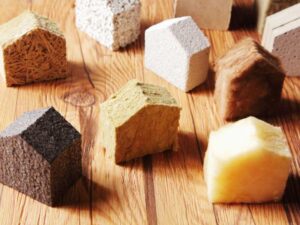Pennsylvania’s diverse climate, with its frigid winters and humid summers, presents unique challenges for homebuilders when it comes to proper insulation. Ensuring your insulation strategy is rock-solid can mean the difference between a comfortable, energy efficient home and a money-draining disaster.
That’s because poor insulation isn’t just an inconvenience—it’s a costly problem that leads to skyrocketing heating and cooling costs, creates uncomfortable living environments, introduces moisture problems, and potentially violates local building codes. Builders who avoid common insulation mistakes can save future homeowners thousands of dollars in long-term energy expenses while preventing potentially serious structural issues.
Understanding Pennsylvania’s Building Codes and Climate Zones
The Pennsylvania Uniform Construction Code provides a comprehensive framework for insulation standards, reflecting the state’s diverse climate zones.
The International Energy Conservation Code (IECC) classifies Pennsylvania across multiple climate zones, zones 4-6.
Each area requires a tailored insulation strategy that is important to understand to select appropriate insulation materials and techniques that will provide optimal thermal performance.
Common Insulation Pitfalls in PA Homes
Insufficient Insulation

Many builders underestimate the importance of proper R-value, especially in critical areas like attic insulation and use R-values below the recommended levels. In attics, walls, and floors, insufficient insulation forces a home’s HVAC system to work harder, leading to increased energy consumption and higher utility bills.
Air Leakage
Air leaks are a silent but costly threat to home efficiency. Proper vapor barrier installation is crucial in preventing these leaks. Air sealing around windows, doors, and structural gaps can dramatically improve indoor air quality and reduce heat loss.
Thermal Bridging
Think of thermal bridging like a bridge for heat to escape – when metal or concrete cuts through insulation, it creates an easy path for warmth to leak out. For example, through a steel stud that’s not insulated. Use thermal breaks or continuous insulation around structural elements to block heat’s escape path through building materials.
Improper Installation Around Obstructions
Proper insulation requires strong attention to detail, especially around difficult areas like plumbing, electrical wiring, and ductwork. Improper installation can create fire hazards and significantly reduce your insulation’s efficiency. Take the time to guarantee these places are insulated completely.
Moisture Management
Effective insulation goes beyond thermal protection. Proper ventilation and moisture control help prevent condensation, mold growth, and long-term damage to insulation materials.
Ignoring Basements and Crawl Spaces
Don’t ignore the areas below the home, like the crawl space or basement. These two areas have a huge impact on the energy efficiency of a home’s living space above. Properly insulating and encapsulating the crawl space and insulating the basement will help prevent heat loss and moisture issues.
Best Practices for Installing Insulation in PA
Choosing the Right Insulation Materials
Before you insulate your home project, it’s important to take the time to research each insulation option to choose the right one for your project. Each type of insulation material has specific advantages. Let’s take a quick look at the big three: Spray foam insulation, particularly closed cell spray foam, offers exceptional performance with its insulating and air sealing properties. Fiberglass is a tried-and-true favorite that comes in batt and loose fill form, while cellulose, made from recycled paper products, is also highly effective.
Installation Techniques Ensuring Proper Installation
Key practices include:
- Achieving proper insulation density
- Eliminating gaps and compressions
- Using appropriate fastening methods
- Maintaining consistent coverage throughout the installation project
Prioritizing Air Sealing Strategies
Comprehensive air sealing is critical. Focus on creating a complete barrier around windows, doors, and all structural gaps to prevent air leaking and maximize your home project’s energy efficiency. Can foam insulation is an ideal way to seal the air leaks on smaller projects while spray foam is an all-inclusive air sealing and insulating strategy for larger projects.
Working with Existing Insulation
When building a home, you get the joy of starting fresh with all new insulation in your building project. For existing homes with remodeling projects, it’s important to know what to do with existing insulation that was previously installed. Be sure to inspect any current insulation and make sure it is undamaged from moisture or pests. If so, it’s ok to add your new insulation on top of the existing insulation. But be sure to speak with an insulation contractor to make sure.
Resources and Tools for PA Builders
Take the time to explore any or all these resources:
- Read the Energy Star guidelines for the recommended insulation R-values for your home project.
- Check out Energy Star’s “Methodology for Estimated Energy Savings” for future homeowners.
- Visit local building associations such as the York Builders Association.
- Visit the U.S. Department of Energy’s “Insulation” page to learn more about the benefits of proper insulation.
- See what tax credits and incentives your insulation project may be eligible for.
A Partnership in Excellence
As a local York builder, prioritizing proper insulation is not just about meeting building codes—it’s about creating superior homes that deliver long-term comfort, efficiency & homeowner satisfaction. Partner with an experienced insulation contractor, like Liberty Insulation, who understands our state’s unique building requirements and guarantees expert installation.
Contact us today to learn more about delivering exceptional value to homeowners with our top-quality insulation solutions for your York insulation project.


